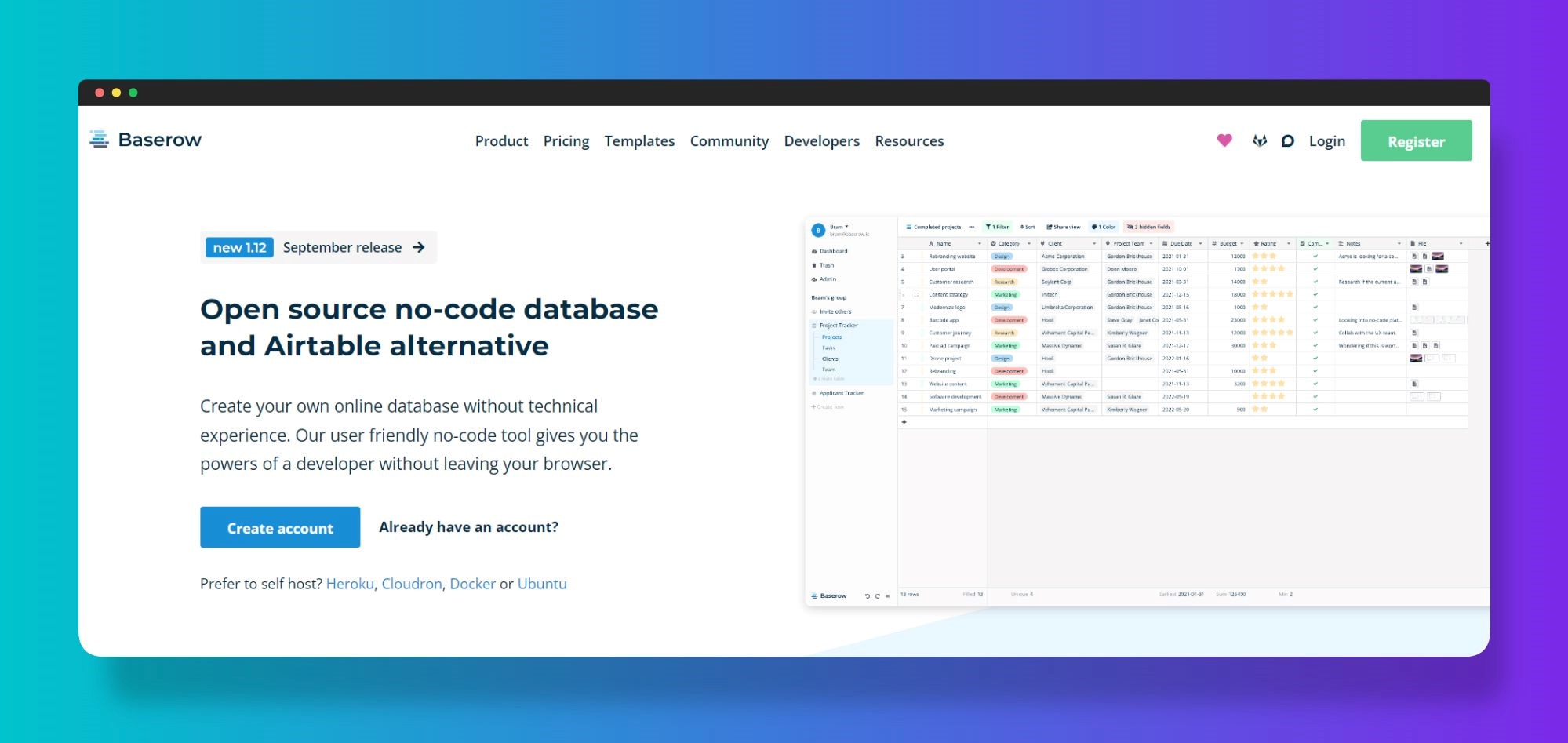Exactly How No-Code Devices Simplify Open Platform Data Source Creation for Every Person
Exactly How No-Code Devices Simplify Open Platform Data Source Creation for Every Person
Blog Article
Discover Exactly How Scalable Data Sources Can Be Used Without Coding to Enhance Your Service Workflow
In today's fast-paced business environment, the capacity to manage and assess data successfully is extremely important. Scalable databases, specifically when matched with no-code remedies, offer a transformative strategy that empowers non-technical customers to enhance procedures. By utilizing tools that need no coding experience, companies can enhance their operational abilities while lessening dependence on IT sources. Nevertheless, the real question lies in comprehending how these solutions can be tailored to specific service requirements and what possible difficulties might occur in their application. Discovering these elements can illuminate the path to functional excellence.
Recognizing Scalable Databases
Scalable databases are vital for contemporary service procedures, enabling companies to successfully manage increasing quantities of information without sacrificing performance. These databases are designed to adjust and expand to the transforming needs of a company, guaranteeing that they can handle larger datasets and more intricate queries as organizational needs develop.
Recognizing scalable data sources includes acknowledging their 2 primary kinds: vertical scaling and horizontal scaling. Upright scaling, or "scaling up," involves including more power (CPU, RAM) to an existing server to enhance efficiency. Conversely, horizontal scaling, or "scaling out," entails including extra servers to distribute the tons, which frequently leads to greater versatility and fault tolerance.
One more essential element is the architecture of scalable data sources, which can be either relational or non-relational. Relational databases, such as MySQL and PostgreSQL, are structured and utilize SQL for queries, while non-relational databases, like MongoDB and Cassandra, offer more adaptability with disorganized information.
Ultimately, understanding scalable databases is important for organizations aiming to take advantage of data as a calculated asset, allowing them to stay competitive in a progressively data-driven environment.

Advantages of No-Code Solutions
Unlocking the possibility of no-code solutions equips companies to simplify procedures and boost productivity without the demand for comprehensive shows knowledge. These systems permit non-technical individuals to develop, change, and take care of databases effortlessly, hence equalizing access to innovation throughout teams.
Among the key benefits of no-code services is their speed of application. Businesses can rapidly release applications and automate procedures, significantly minimizing the moment invested in growth cycles. This dexterity enables organizations to react immediately to market changes and client needs, promoting an one-upmanship.
In addition, no-code systems lower reliance on IT divisions for everyday jobs, allowing technical teams to concentrate on even more complex jobs that call for specialized abilities. This change not only optimizes resource allotment however also advertises advancement within the company.
Cost-effectiveness is another benefit, as no-code options can reduce development and upkeep costs. By reducing the requirement for coding proficiency, companies can harness the capacities of their existing labor force without the expenses of employing extra workers.
Popular No-Code Data Source Devices
The surge of no-code services has helpful resources actually brought about the development of various database devices that satisfy businesses seeking efficiency and availability. These devices empower customers with limited technological expertise to create, manage, and control databases flawlessly.

Caspio stands apart for its ability to construct internet applications with no coding. It allows businesses to produce robust data sources and release applications rapidly, dealing with numerous industry demands. Flair offers powerful information and straightforward interfaces administration capabilities, allowing companies to build personalized applications customized to their process.

Usage Cases in Service Workflow
Just how can services take advantage of database tools to improve their procedures? Scalable databases offer organizations with powerful capacities to handle and evaluate information without the requirement for comprehensive coding understanding. These tools can enhance various business processes, ultimately bring about improved efficiency and performance.
One prominent use situation is customer connection monitoring (CRM) Companies can use scalable databases to track customer communications, preferences, and comments, enabling personalized interaction and far better service. By systematizing this info, teams can team up a lot more properly and react to client needs in real-time.
An additional substantial application is stock monitoring. Companies can utilize no-code data source devices to check supply degrees, track shipments, and forecast need. This guarantees optimal supply degrees, decreases waste, and reduces stockouts.
In addition, task monitoring can benefit from scalable databases by enabling groups to take care important link of jobs, due dates, and sources in a linked system. With real-time updates and data visualization, task supervisors can make informed choices.
Getting Going With Implementation
Executing scalable data sources in organization procedures requires a structured method to guarantee effective integration and use. The initial step is to conduct a detailed demands evaluation, identifying certain business requirements, data types, and anticipated growth patterns. This fundamental understanding will certainly assist the option of the proper data source service.
Next, select a straightforward, no-code database platform that aligns with your functional goals. no-code. Several modern options use instinctive interfaces, allowing non-technical users to manage data properly. After picking a system, develop a clear data style that lays out exactly how information will certainly be arranged, accessed, and kept
Training is important; guarantee that staff member are furnished with the essential skills to make use of the database. Take into consideration giving tutorials or workshops to familiarize staff with the system's capabilities.
Conclusion
In conclusion, the combination of scalable data sources with no-code solutions presents significant advantages for business operations. These platforms encourage non-technical users to effectively take care of and evaluate data, helping with boosted decision-making and collaboration. By adopting devices such as Airtable and Idea, organizations can reduce and enhance procedures reliance on IT resources. Eventually, leveraging these modern technologies can result in improved productivity and functional performance, placing companies for continual growth in an affordable landscape.
One prominent no-code data source tool see post is Airtable, which integrates the functionality of a spread sheet with the power of a database.Just how can services utilize database tools to improve their procedures? Organizations can make use of scalable databases to track client interactions, preferences, and comments, allowing personalized communication and far better solution.Implementing scalable databases in business operations calls for a structured technique to guarantee successful combination and utilization.In conclusion, the combination of scalable databases with no-code services presents substantial benefits for company operations.
Report this page